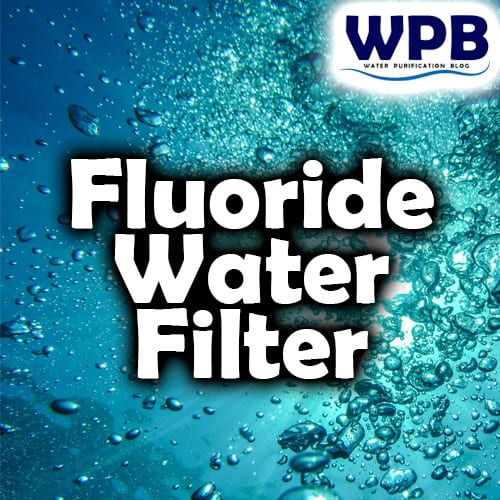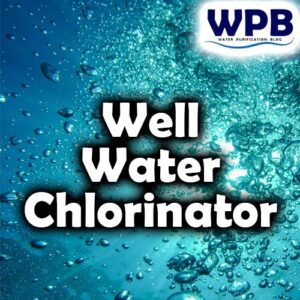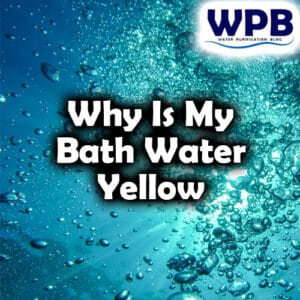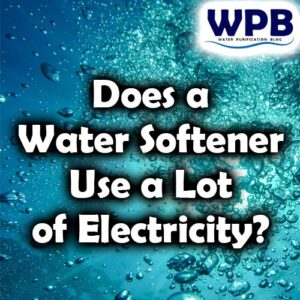Fluoride in water is a topic with controversy and important health implications. If you are concerned about the fluoride levels in your drinking water, a fluoride water filter can be a good way to reduce your exposure to this mineral. When choosing a filter, be sure to consider the factors mentioned in this article to find the best option for you.
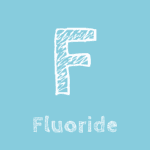
Although adding fluoride to drinking water has been linked to tooth decay prevention and better dental health, there are concerns about negative effects.
This is why a fluoride filter might be a good health investment, depending of fluoride concentration in your water.
Table of Contents
Fluoride in Drinking Water Concerns
Research has shown that excessive fluoride exposure can have serious consequences, including possible brain damage and neurotoxicity.
Local laws and regulations regulate the amount of fluoride in drinking water, with the goal of maintaining a balance between benefits and risks.
What is Fluoride and why is it Added to Water?
Fluoride is a naturally occurring mineral that has been shown to be beneficial for dental health.
However, too much fluoride can be harmful, especially for children. If you are concerned about the fluoride levels in your drinking water, you may need a fluoride water filter.
How to Measure Fluoride Levels in Your Water Easily
One of the fastest and easiest ways to measure fluoride in water are water test kits.
With a specialized water test kit You can get an idea of fluoride levels and find out if You need some kind of fluoride water filters, or an experienced water specialist consultation.
These tests are a cheap and economical way to learn more about your water quality.
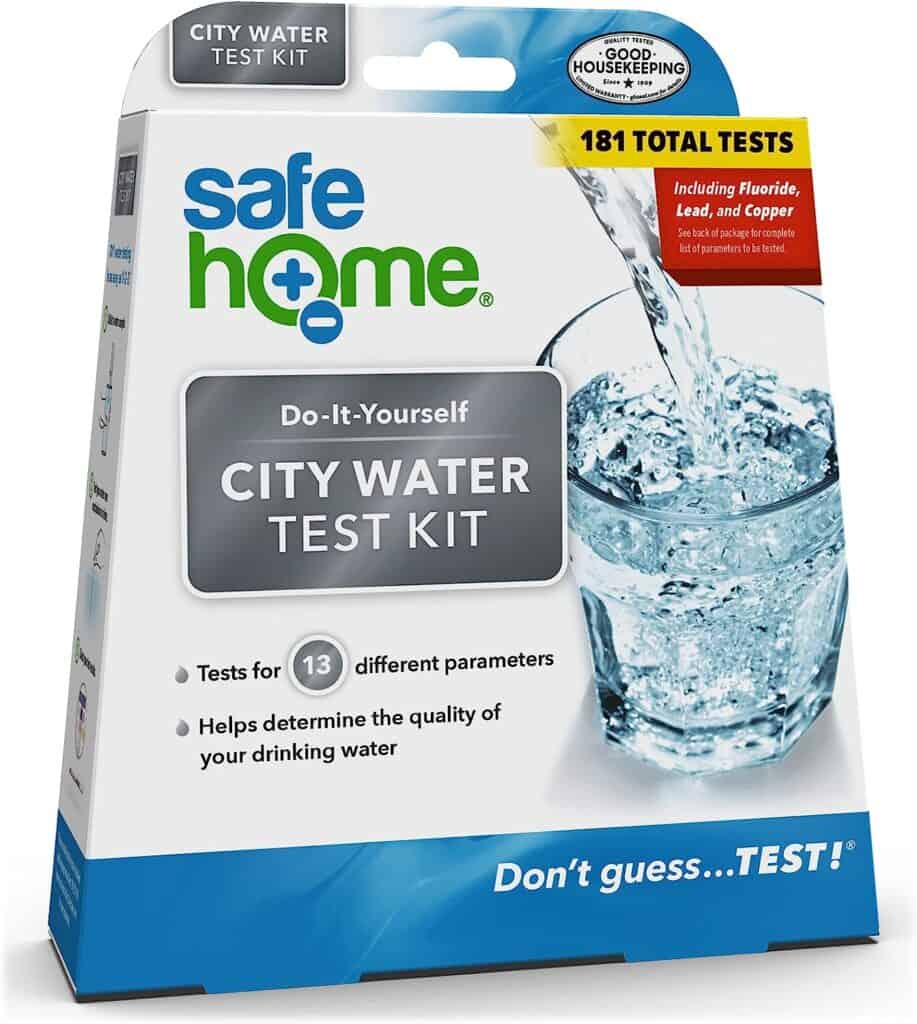
DIY Testing for 13 Different Parameters in a City Water Supply – 181 Total Tests/Kit – Includes Lead, Copper, Iron, Fluoride, Nitrate, pH, Hardness & More
- NEXT GENERATION – CITY WATER TEST KIT for 2022 & beyond, with patented technologies never before available in one test kit.
- INCLUDES 16-testing mechanisms that provide 181-total tests/kit, for 13-different parameters. See attached image of package-back, for a complete list of parameters to be tested.
- EXCLUSIVE BRAND of water test kits to earn the Good Housekeeping Seal. Named one of the Top-10 New Products at the National Hardware Show. Includes trilingual instructions. MADE IN THE USA!
Fluoride Water Filters: which is the best Choice
- Reverse osmosis: RO water filtration system is a water purification process that uses a reverse osmosis membrane to remove dissolved solids from water. This includes fluoride, chlorine, and other contaminants. Reverse osmosis filter systems are typically installed under the kitchen sink and can be expensive, but they are very effective to filter fluoride. Filtered water is not only free of fluoride, but from many other contaminants. It is available to use on the filtered water kitchen sink faucet.
You can even use filtered water to fill up your water bottle and carry around your filtered water free of fluoride and heavy metals.
Read more about drinking water home reverse osmosis system in our other post:
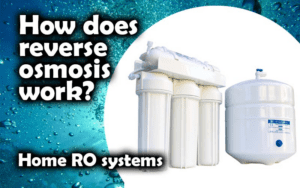
- Activated alumina: Activated alumina is a type of filter media that is specifically designed to remove fluoride. Activated alumina filters are available in a variety of forms, including pitchers, faucet attachments, and whole house systems.
- Ion exchange resin: Ion exchange resin is another type of filter media that can be used to remove fluoride. Ion exchange resin filters work by exchanging positively charged ions (such as fluoride) for negatively charged ions (such as chloride). Ion exchange resin filters are available in a variety of forms, including pitchers, faucet attachments, and whole house systems.
- Fluoride water filter pitcher: There are many fluoride filters available in a pitcher model. Their advantage is that they can be used as a portable fluoride water filter.
- Distillation: Distillation is a water purification process that uses heat to vaporize water and get distilled water. The vapor is condensed back into liquid form in a water distiller, leaving behind any contaminants, including fluoride. Distillers are typically used to purify small amounts of water, such as for drinking or cooking.
When choosing fluoride water filters, take care of the following factors:
- The level of fluoride in your water: The type of filter you need will depend on the level of fluoride in your water. If you live in an area with high fluoride levels, you will need a filter that is specifically designed to remove fluoride.
- The size of your household: If you have a large household, you will need a filter that can produce enough water to meet your needs.
- Your budget: Water filters can range in price from a few dollars to several hundred dollars. Choose a filter that fits your budget and your needs.
Additional tips for choosing fluoride water filters
- Look for a filter that is NSF certified to remove fluoride. This certification ensures that the filter has been tested and meets certain standards for effectiveness.
- Read reviews of different filters before making a purchase. This can help you get an idea of which filters are most effective and reliable.
- Change the filter cartridges regularly according to the manufacturer’s instructions. This will ensure that the filter is working properly and removing fluoride from your water.
What is the optimal concentration of fluoride in drinking water?
It is difficult to answer this question correctly. It primarily depends on age, food intake and many other factors. It is considered, in general, that the concentration of fluoride in drinking water should not be less than 0.5-0.6 mg/L in order for it to have a prophylactic anti-caries effect.
On the other hand, there should not be more than 1.5 mg/L of fluorine in drinking water in order to prevent the possible manifestation of its unwanted and toxic effects.
Based on the largest number of local laws, it is otherwise considered that additional fluoridation of drinking water is necessary if the concentration of fluorine in it is lower than 0.7 mg/L.
It must be emphasized at the end of this chapter that children’s daily need for fluoride is about 0.4 mg/10 kg of body weight, and adults about 2.5 mg per day. In addition to sufficient amounts of fluorine, sufficient amounts of calcium, magnesium, phosphorus, vitamins D and C, as well as their mutual relationship, are necessary for the quality development of dental tissues. And while the body needs equal amounts of fluorine and magnesium, it seems that it needs ten times more calcium.
Fluoridation of drinking water is the most commonly used preventive measure
In the largest number of countries in the world, this measure has achieved a significant reduction in the incidence of caries, so it can be safely said that systemic fluoridation of drinking water is one of the most important methods in the prevention of caries.
For the first time, drinking water was fluoridated in the town of Grand Rapids in Michigan, USA, in January 1945. Since then, the results of hundreds of clinical studies have been published, which have shown the validity of this method with certainty. By analyzing the results obtained from 113 clinical studies conducted in 23 countries, it can be concluded that fluoridation of drinking water reduces caries in both deciduous (40-49%) and permanent teeth (50-59%).
Previously, drinking water with an optimal fluoride concentration was thought to be important only for the development of dental tissues in children. Today we know for sure that the optimal concentration of fluoride in drinking water protects the teeth of adults as well.
In the largest number of developed countries in the world, the population drinks fluoridated water.
Laws have been introduced into the legislation of many countries that either oblige water to be fluoridated, when there is not enough of this element in it, or allow the possibility to do so.
In general, a direct link was established between the concentration of fluoride in drinking water and the occurrence of tooth decay in school children.
In the waterworks, there are special devices that inject a 40% solution of sodium fluoride or sodium silicofluoride powder into the main line at certain time intervals. As much fluoride is added as is necessary so that after mixing the fluoride concentration in the drinking water is between 0.7-1.2 mg/L.
Daily control of the concentration of fluorine in the water from the main water supply and occasional control in the water from different parts of the water supply network is mandatory.
Conclusion
The effectiveness of a fluoride water filtration system will depend on the type of filter, the level of fluoride in the water, and the frequency of filter changes.
Reverse osmosis systems are the most effective water filtration system, but they are also the most expensive.
Activated alumina and ion exchange fluoride filter can be less expensive than reverse osmosis systems, but they may not be as effective to filter fluoride.
Distillers are the least effective at removing fluoride, but they are also the simplest and most affordable option.
By following these tips, you can choose fluoride water filters that will help you reduce your exposure to this mineral and improve your water quality.

Who am I?
I am working as a water treatment technical manager and I have more than 25 years of practical experience in water purification.
Water purification expert
After many years of experience in water purification, I want to share some of my knowledge and get people to know the real importance of water quality.
Water purification and water treatment are very complex themes, so it is important to explain them in an easy-to-read way.
On this blog, you will find many understandable, easy-to-read information about water purification.
I hope you enjoy it, find some useful information, and thank You for reading.
More info on my work and my expertise on water purification can be found on my LinkedIn profile.

